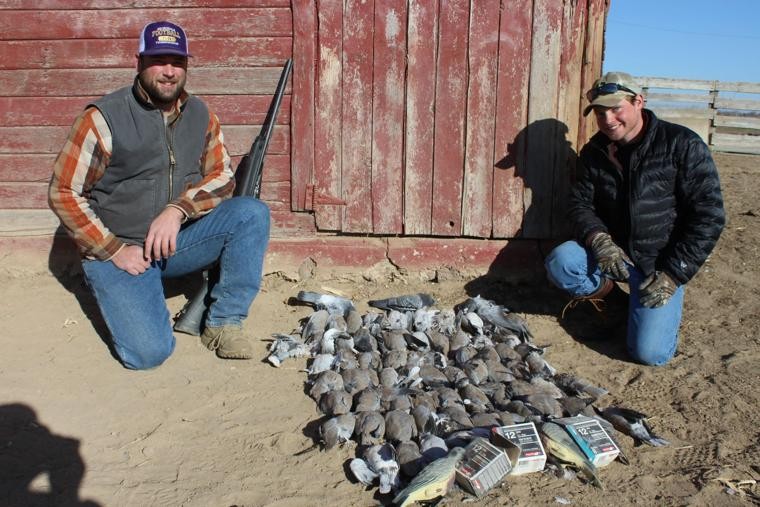Katy and I just put a Honda BF2.3 motor on our jon boat, ditched the trolling motor and are zipping around the lake slaughtering the crappie. I may have crappie addiction issues. This year, the fishing is unbelievable although it was a lot slower this past Saturday. We only caught 50 in three and a half hours. I flew home Friday night, had plane troubles and was late getting in. As we were going to bed, Katy said she wanted to go crappie fishing the next day. I'm a lucky guy.
I need to be up bow hunting this week but things are a little scattered this year. Or maybe I have to broaden out that statement and say this lifetime. Then suddenly I remembered! A few more days and it’s dove season. Yikes! School is starting and we don’t want any school kids getting attacked by dive bombing doves, do we? So, we must get out and do our civic duty and protect the kids.
Dove hunting is a blast. It’s a great hunt for many reasons. It is low-key, you can talk, it’s not too intense, you don’t have to get camo’d to the max like when whitetail hunting and the weather is mild.
It’s also a great hunt to start kids on.
When dad started me dove hunting, I couldn’t even reach the trigger of the double barrel shotgun. I couldn’t have been 6 years old. I had to tuck the butt under my arm and shoot like Granny on the "Beverly Hillbillies." Opening day at lunch mom would come pick us up at school and take us to meet dad to hunt.
Since those days I’ve dove hunted in Idaho, Texas, Kansas, Nebraska and Colorado. Hunting is somewhat similar no matter what state you hunt. Doves are agricultural birds. What I mean by that is they prosper around farms. Hunting over milo fields is awesome or near water ponds in the evening/morning. Years ago in Nebraska, we hunted the marijuana patches that grew wild.
In Idaho I’ve had good luck around old farm yards, corrals, feedlots and water sources. They like to set in dead trees. Dove season opened Sept. 1, as far as I know, pretty much nationwide. But don’t forget another side hunt-Eurasian doves. The Eurasian dove is about one-third larger and since it is an invasive species you can hunt it year-round and there’s no limit. The daily limit on mourning doves is 15 with a possession limit of 45.
As you can see, dove hunting is a great hunt since we can hunt mourning doves and Eurasian doves at the same time. You can really rack up and get a mess of doves. Like in all hunting, if you scout, you’ll be more successful. Drive around and see if you see any flying and ask permission to hunt. Scout out grain fields, old barn yards and water sources.
They don’t really start flying good until late afternoon so you can sneak out after work and still have a great hunt. Last September, when I was working over at Burley, I had a great field that they were feeding in. And right across the dirt road was some big barns that held hundreds of Eurasian doves. I had a lot of shooting there. But right out of Nampa a buddy’s grandparents had an old farmstead that was unbelievable. I don’t remember how many we shot in less than three hours but it was close to 100. What a hunt.
So how do you hunt them? In the middle of the afternoon if they’re out in the fields feeding it can be tough to sneak up on them. You and your buddy may have to take turns jumping them so they fly around and the other one can get some shots.
Get concealed along tree rows. They like to follow them. As alluded to above and especially on dry years early/late it can be good at ponds and slow-moving rivers/creeks. Wear a camo shirt and cap and get semi-concealed for maximum shooting.
I use 7 ½ shot and either a 12-gauge or a .20. I like modified chokes because most shots will be close. A semi-auto is fun but you’re limited to three shots. I usually use low base shells but high base shells are more effective.
Cotton Ward, the old outdoor writer for the Idaho Press back when I first started writing for the IP 19 years ago, ago gave the most accurate description of the flight of a dove that I’ve ever heard. He said “when they come dipsy doodling in, they can be deceptive and hard to hit.” Even though they are smooth, beautiful fliers don’t let them deceive you, they are hauling. If you’re missing, try leading them more. And for sure follow through when shooting.
In the old days, everyone cleaned them whole. Mr. Teague used scissors to clip off the wings, the feet, the rear end and then cut up each side of the back bone and remove it and the guts. Now everyone just breasts them. They make great poppers. Have fun.
Tom Claycomb lives in Idaho and has outdoors columns in newspapers in Alaska, Idaho, Utah, Nevada, Colorado and Louisiana. He also writes for various outdoors magazines and teaches outdoors seminars at stores like Cabela’s, Sportsman’s Warehouse and Bass Pro Shop.



